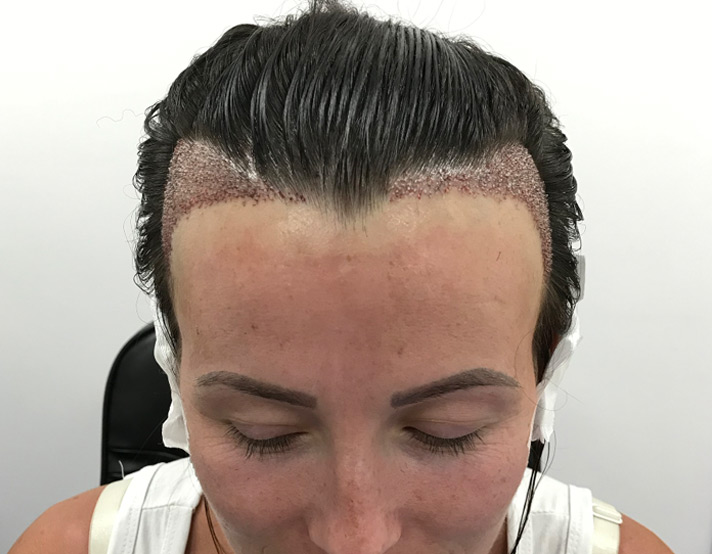Hair transplant is a widely preferred solution for individuals dealing with hair thinning or baldness. It involves moving hair follicles from one area of the scalp to another where hair is thinning or missing. The technique used can significantly impact the final look, so choosing the right method is essential for natural-looking, lasting results. Lets delve into Hair Transplant Dubai.
What Makes a Technique Right for You?
Each person’s hair texture, growth pattern, and level of hair loss are unique. That’s why it's important to consider various factors before deciding on a specific hair transplant technique. The right technique is the one that best matches the individual’s hair characteristics, lifestyle, and expectations.
Common Hair Transplant Techniques Explained
Follicular Unit Transplantation (FUT)
Often referred to as the strip method, FUT involves removing a strip of scalp from the donor area. The follicles are then separated and implanted into the thinning areas. It may be a good fit for those who need a higher number of grafts in one session.
Follicular Unit Extraction (FUE)
FUE involves extracting individual hair follicles from the donor region using specialized tools and then implanting them into the recipient area. This technique is suitable for those looking for a minimally invasive approach with no linear scar.
Direct Hair Implantation (DHI)
DHI is a variation of FUE where the follicles are implanted directly into the scalp using a specific pen-like tool. It can allow for more precision and control over hair placement and angle, making it ideal for enhancing hairlines or specific zones.
Factors to Consider Before Choosing
Hair Loss Pattern
The extent and pattern of hair loss play a major role in determining the right technique. Some methods are more effective for widespread thinning, while others are better suited for smaller patches or hairline refinements.
Hair Density in Donor Area
A strong and healthy donor area ensures better results. FUE might be ideal for those with good hair density, while FUT can provide more grafts in one session if needed.
Hair Texture and Type
Curly or coarse hair might require different handling techniques compared to straight or fine hair. The selected method should work well with the individual’s hair characteristics to ensure natural outcomes.
Desired Hairline Design
Some techniques offer more control and precision for designing a new hairline. This is especially important for those focusing on detailed cosmetic improvement in the front portion of the scalp.
Time and Recovery
The duration of the procedure and the recovery timeline vary between techniques. Those with a busy schedule may prefer options with shorter recovery times and less visible healing signs.
Lifestyle and Personal Preferences
Daily Activities
Individuals with active lifestyles may lean toward less invasive methods that allow for a quicker return to routine activities. Understanding how each technique aligns with daily habits helps in making the right decision.
Hairstyle Goals
Some techniques are better suited for short hairstyles due to minimal scarring, while others work well when longer hair is maintained to cover any signs of the procedure. Personal grooming preferences are worth factoring in.
Consultation for Hair Analysis
Before any decision is made, a thorough hair and scalp analysis is typically conducted. This includes assessing the scalp’s health, hair density, and the potential success rate of different techniques. A clear understanding of one’s unique hair profile helps narrow down the choices.
Realistic Expectations
No matter which method is chosen, setting realistic expectations is crucial. Hair transplant procedures enhance appearance but don’t instantly restore full density. Patience and an open mind contribute greatly to overall satisfaction.
Comparing Technique Outcomes
FUT Outcomes
May offer more volume in a single session
May leave a linear scar, typically covered by longer hair
Often suitable for those seeking extensive restoration
FUE Outcomes
Results in tiny, dot-like scars
Ideal for those who prefer short hairstyles
Well-suited for moderate hair loss cases
DHI Outcomes
Offers control over angle and placement
It may be ideal for dense hairline designs
Often requires a longer time per session due to precision work
Choosing Based on Goals
Understanding what you want from the hair transplant — whether it’s subtle improvement or a complete restoration — helps guide the selection process. Every technique has strengths that align with different goals and preferences.
The Role of Personal Comfort
Comfort with the chosen method is just as important as technical suitability. Learning about each technique, viewing examples of results, and considering how they align with personal confidence can help individuals feel more secure in their decision.
FAQs
What’s the most natural-looking method?
FUE and DHI are both known for delivering very natural-looking outcomes, especially when performed with attention to direction and angle of hair growth.
How long does it take to see results?
Hair growth usually becomes noticeable within a few months, with fuller results visible over time as the hair naturally thickens.
Can anyone get a hair transplant?
Most people experiencing hair thinning or baldness are potential candidates, but suitability depends on factors like donor hair quality and scalp health.
How is the donor area selected?
The back or sides of the scalp are commonly chosen, as hair in these regions is more resistant to thinning and usually offers stable growth.
Is one method better than another?
Each technique has its own benefits and is better suited for certain hair types, loss patterns, and goals. The right choice varies from person to person.
Final Thoughts
Choosing the right Hair Transplant in Dubai technique is a highly personal decision that should be based on individual hair characteristics, goals, and preferences. Taking time to understand the available methods, knowing what to expect, and being clear about desired outcomes can help ensure a satisfying and long-lasting transformation.





Comments